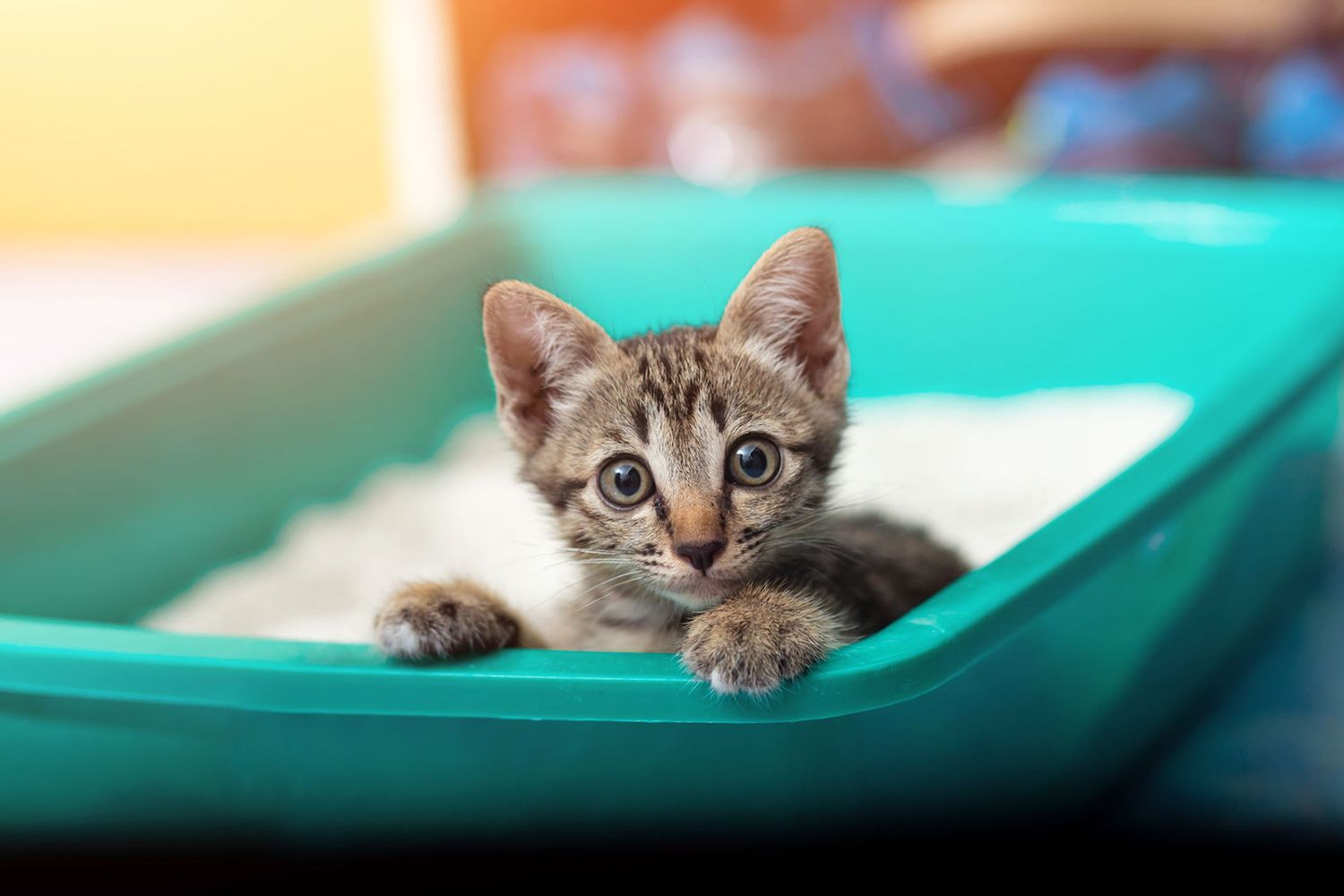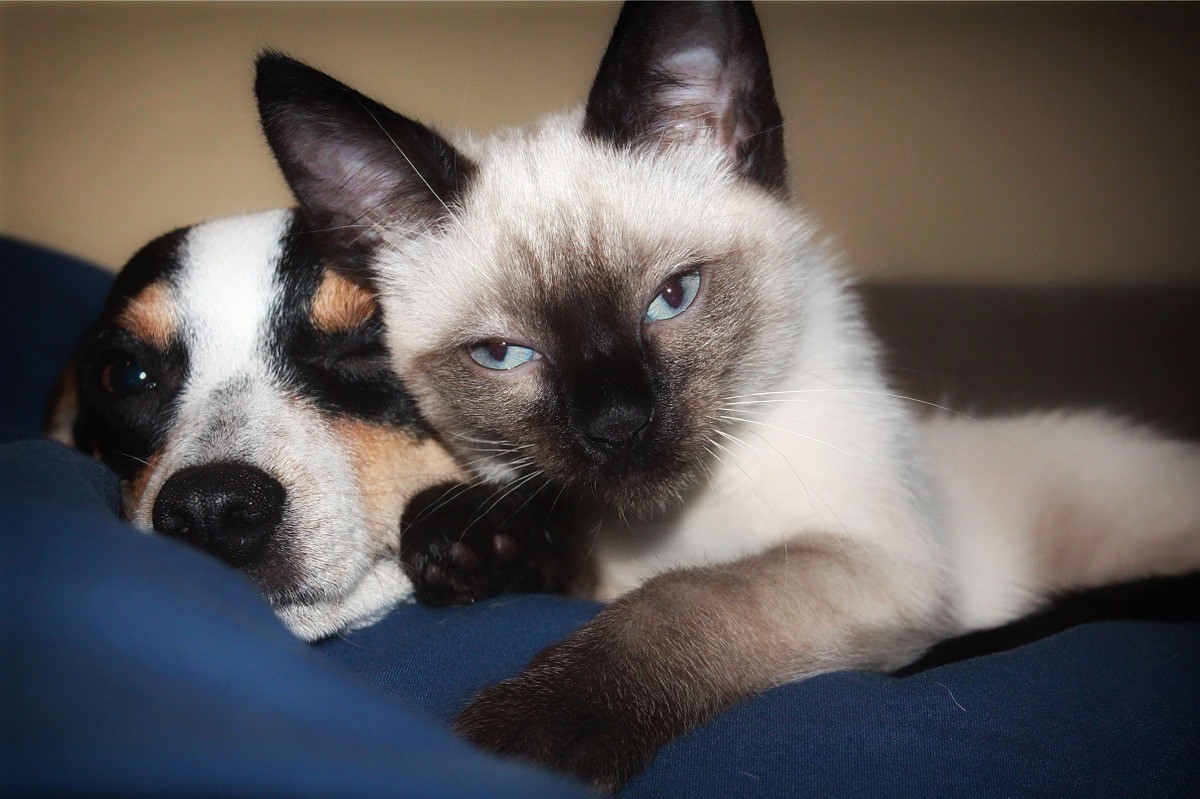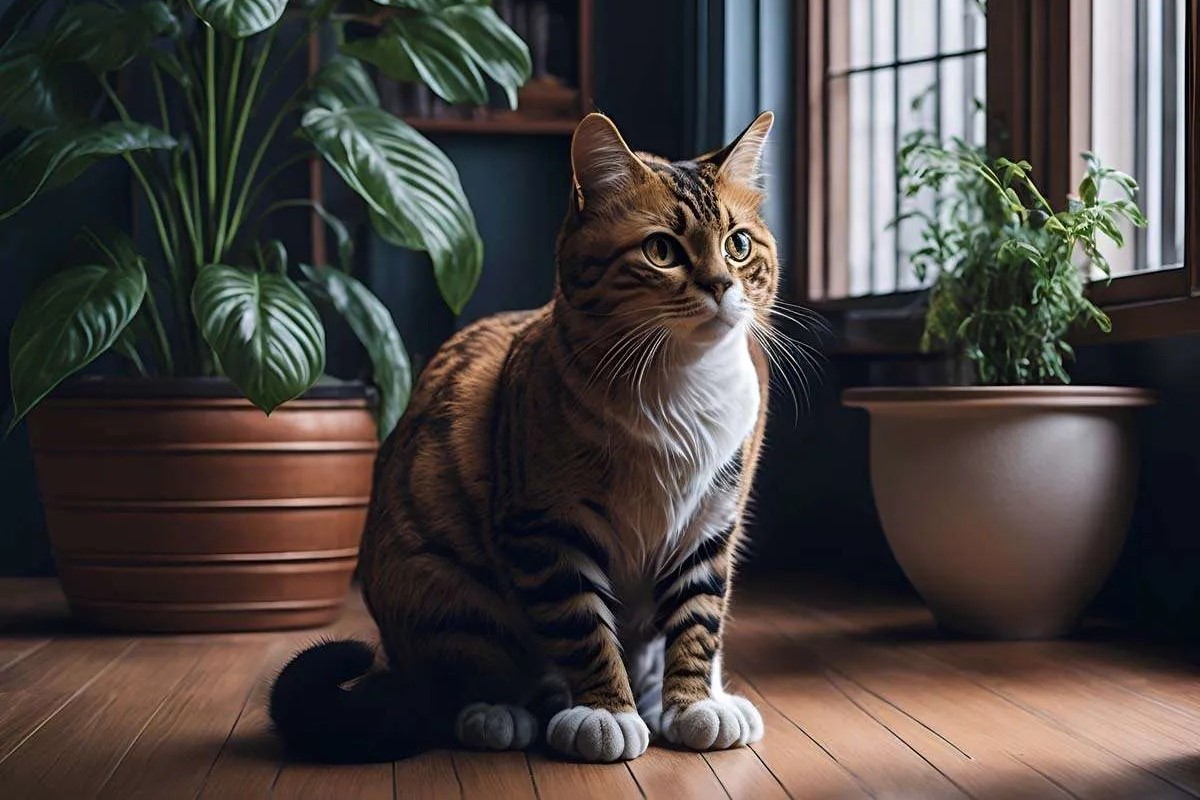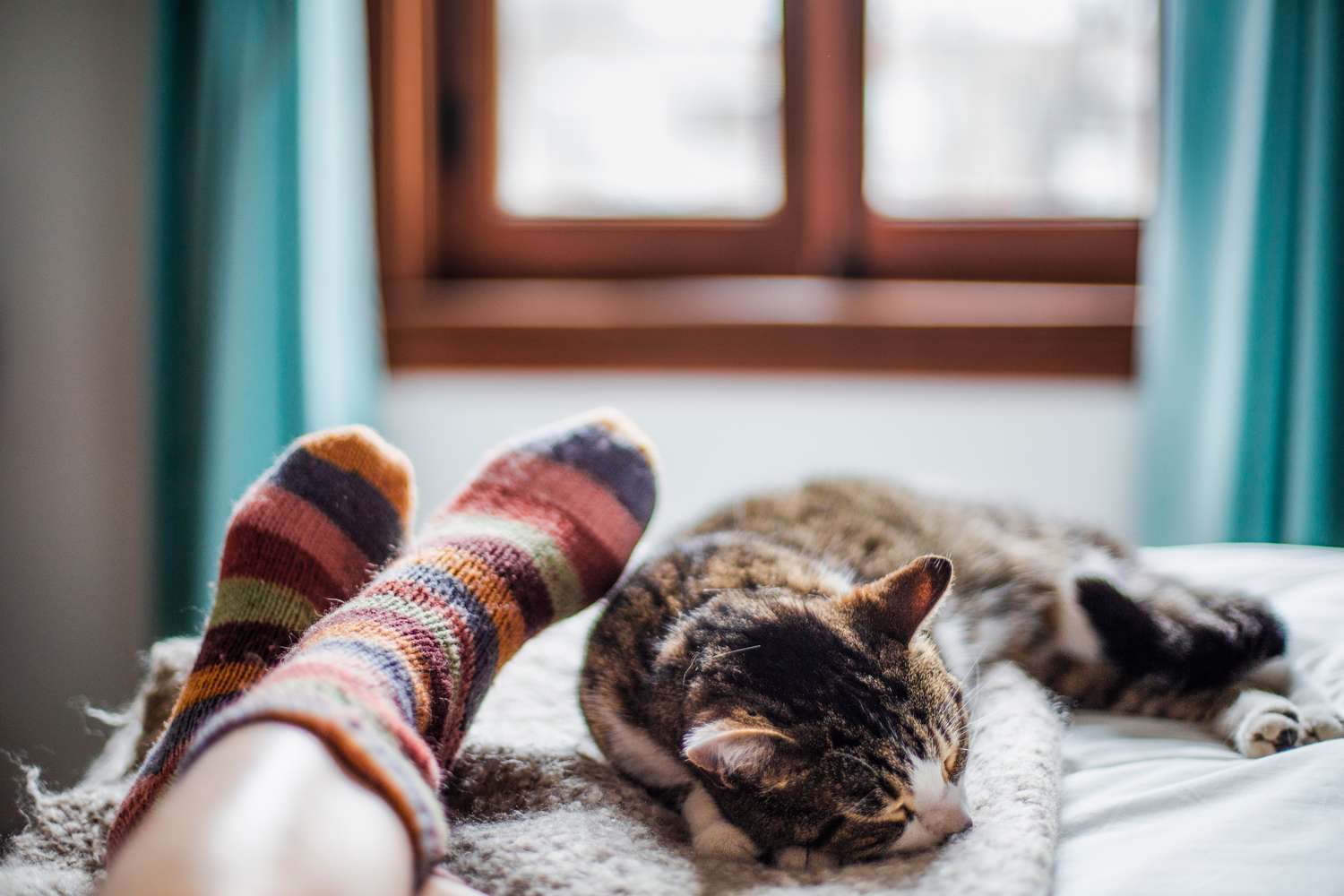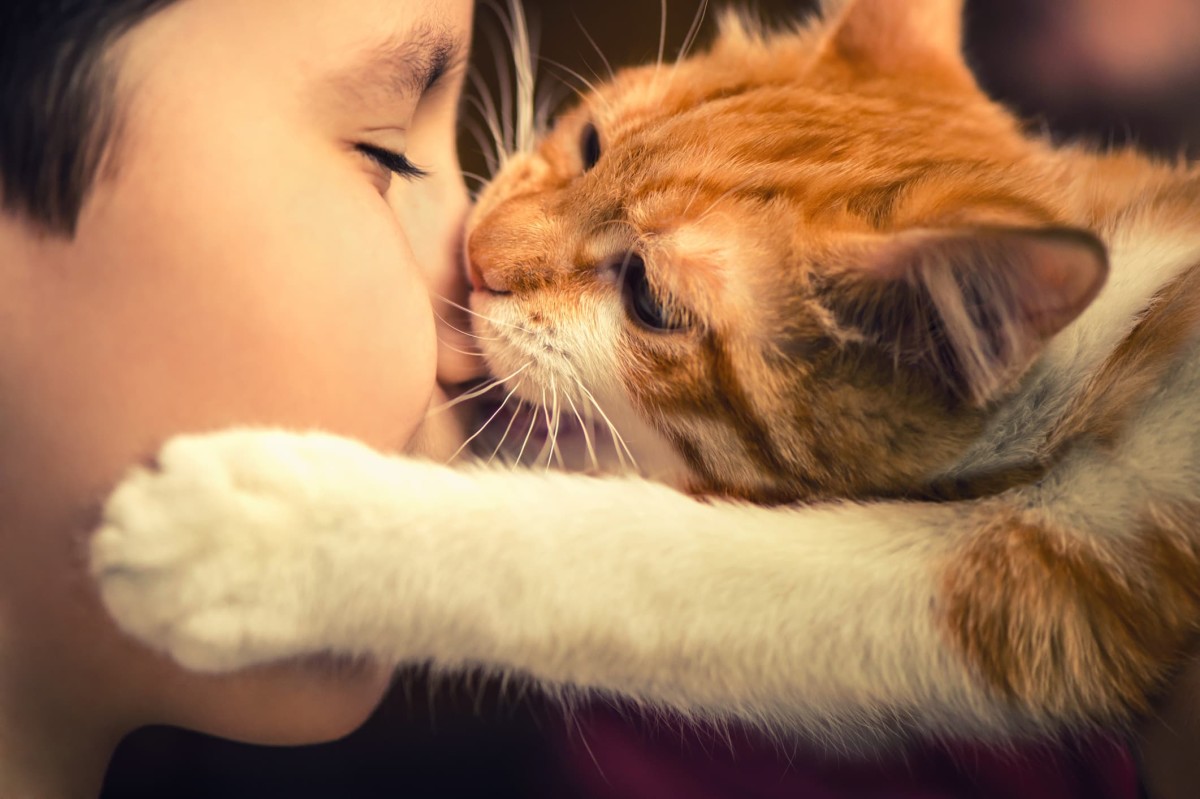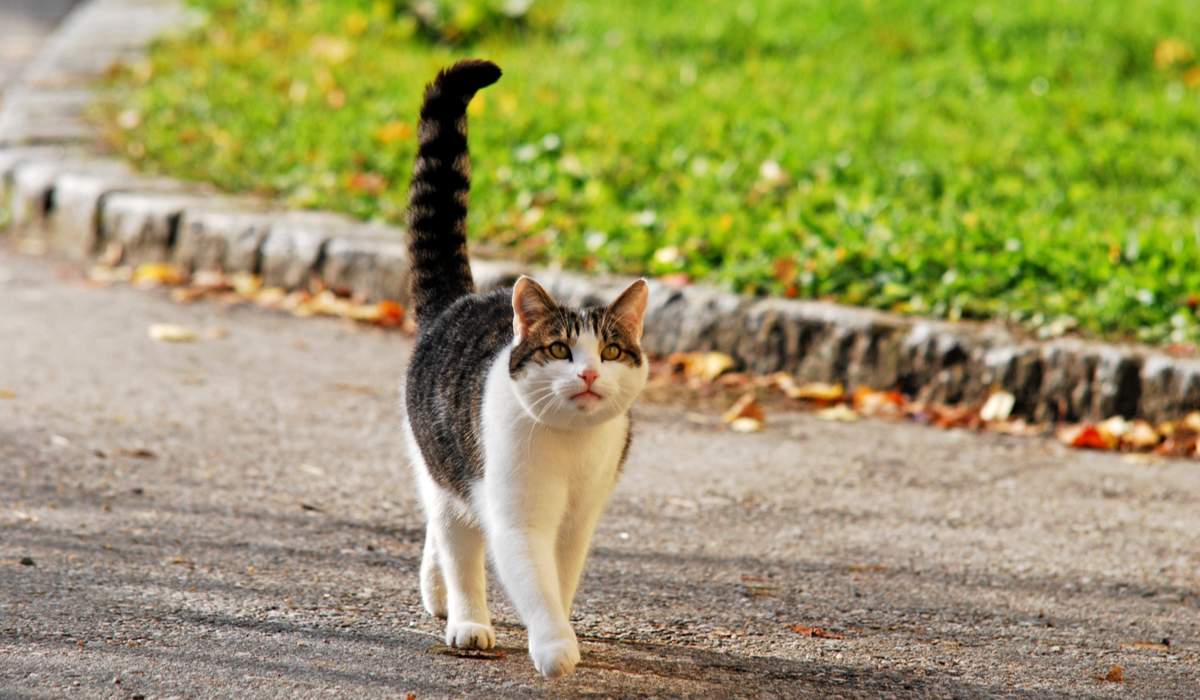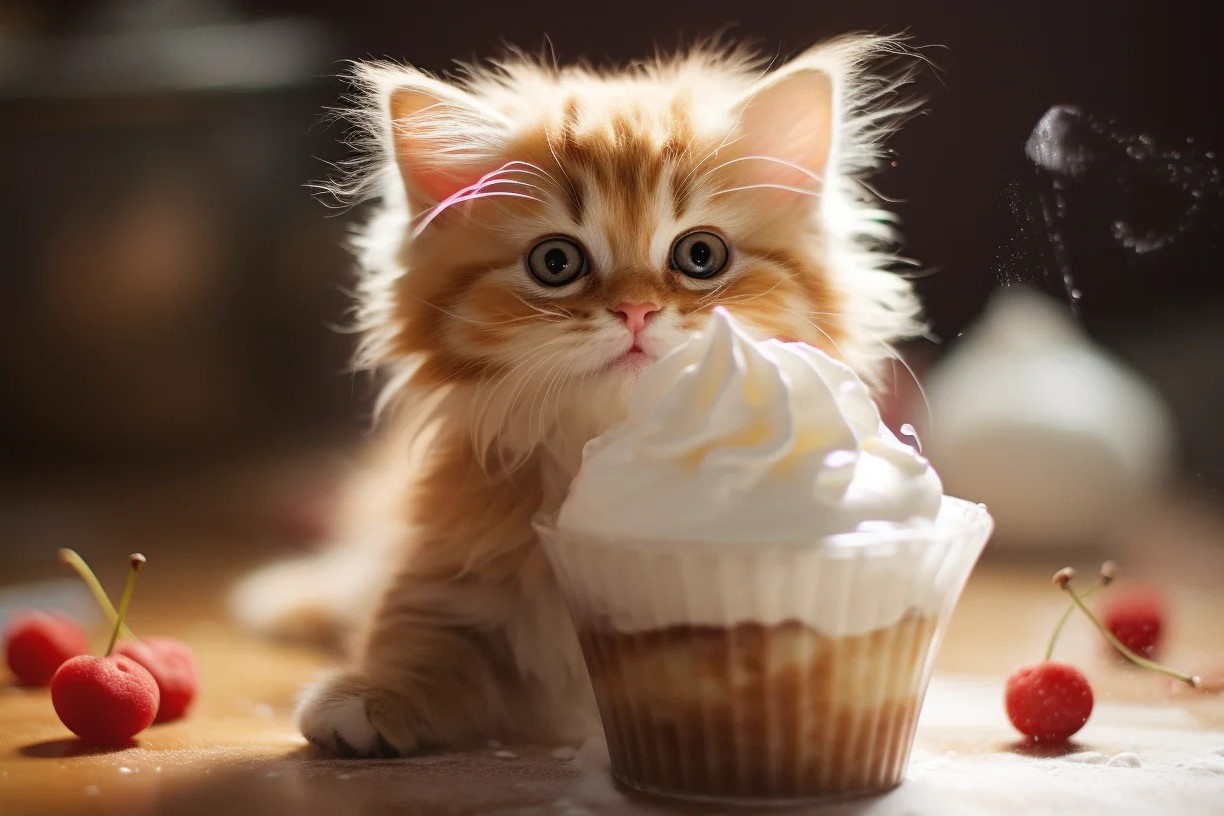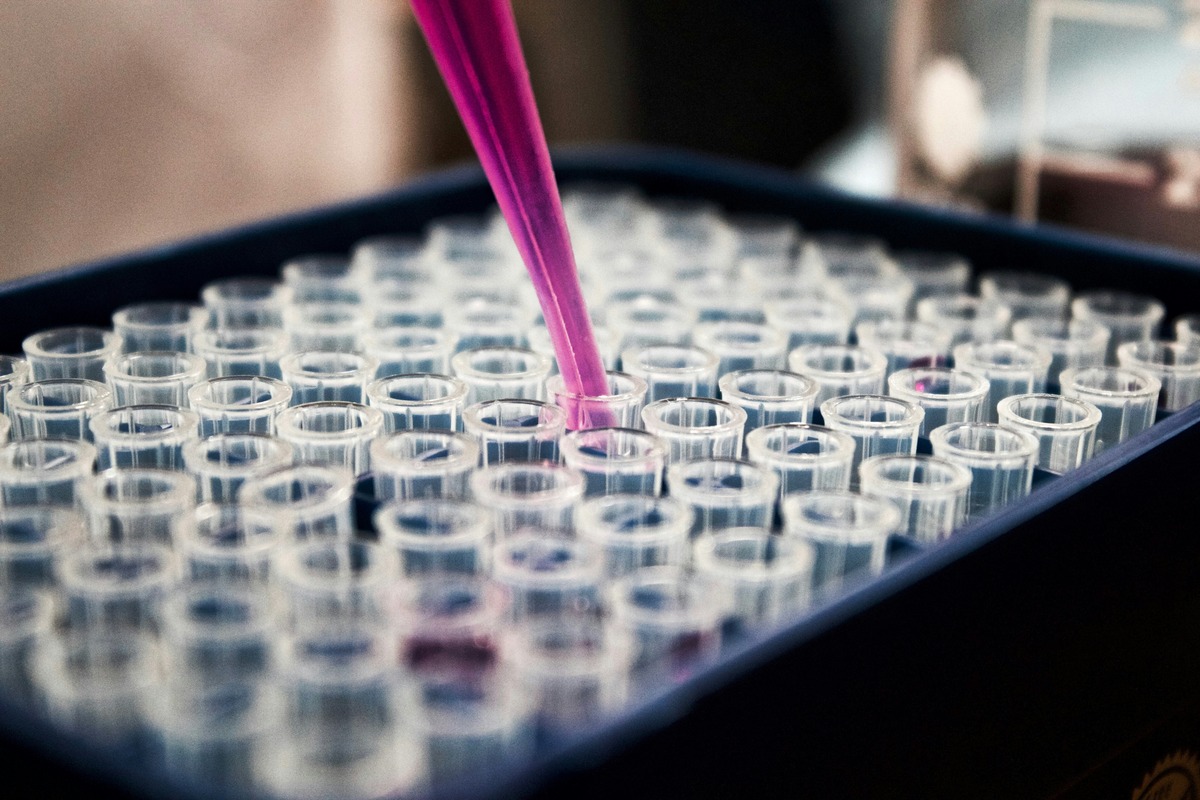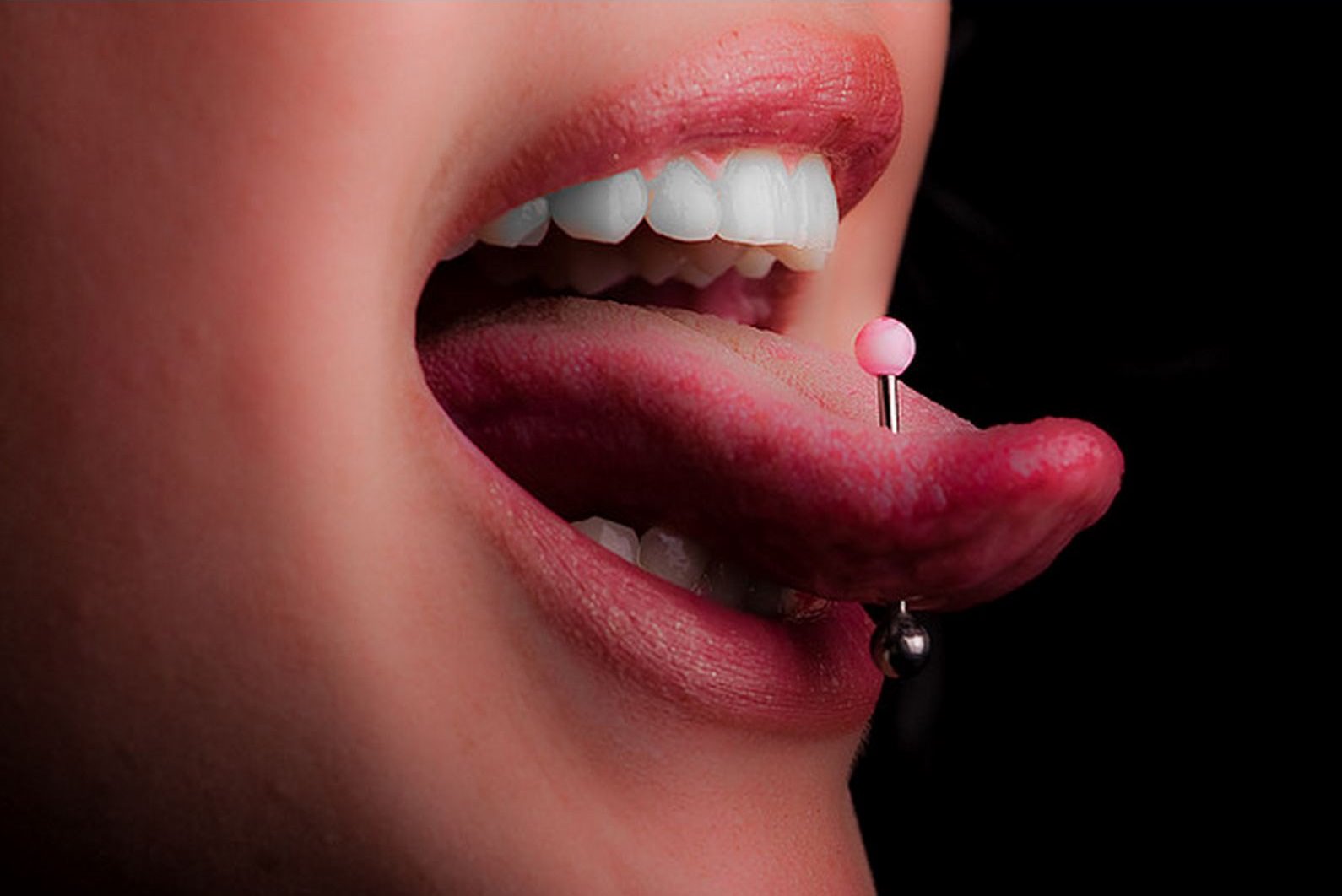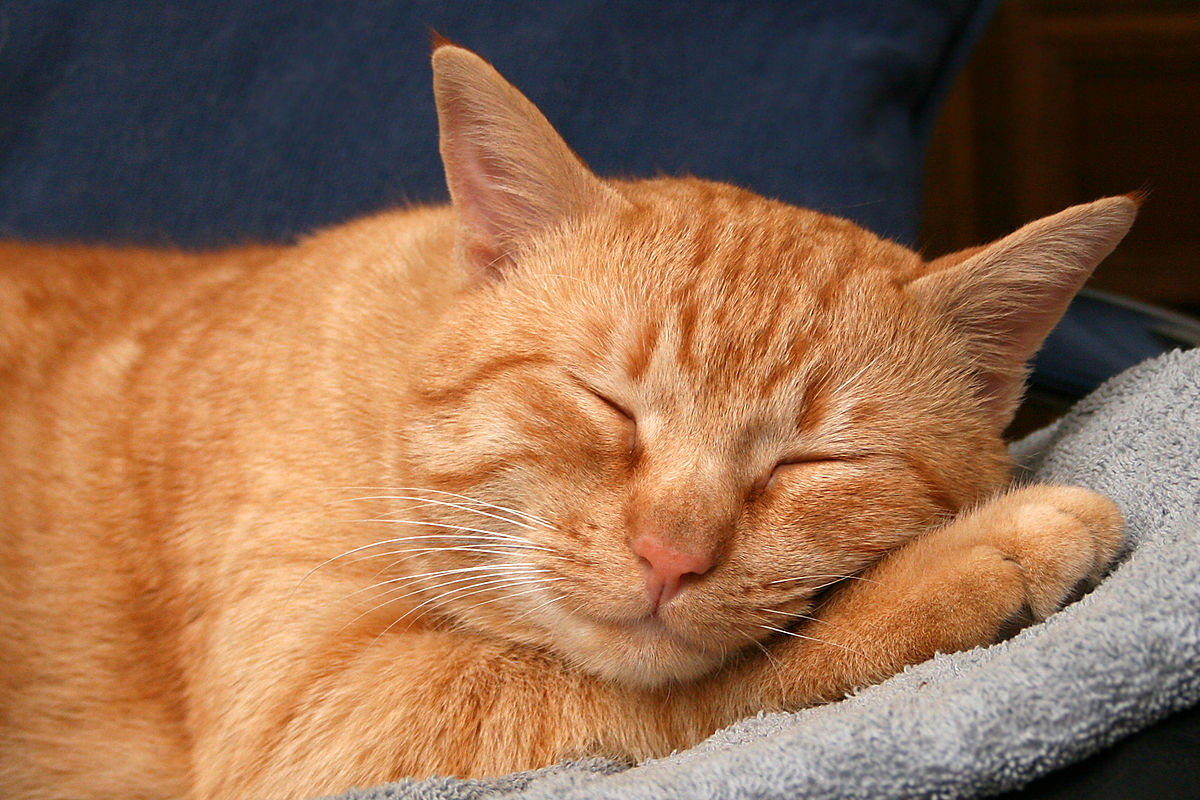Home>Science>The Surprising Reason Why Cat Tongues Are So Rough
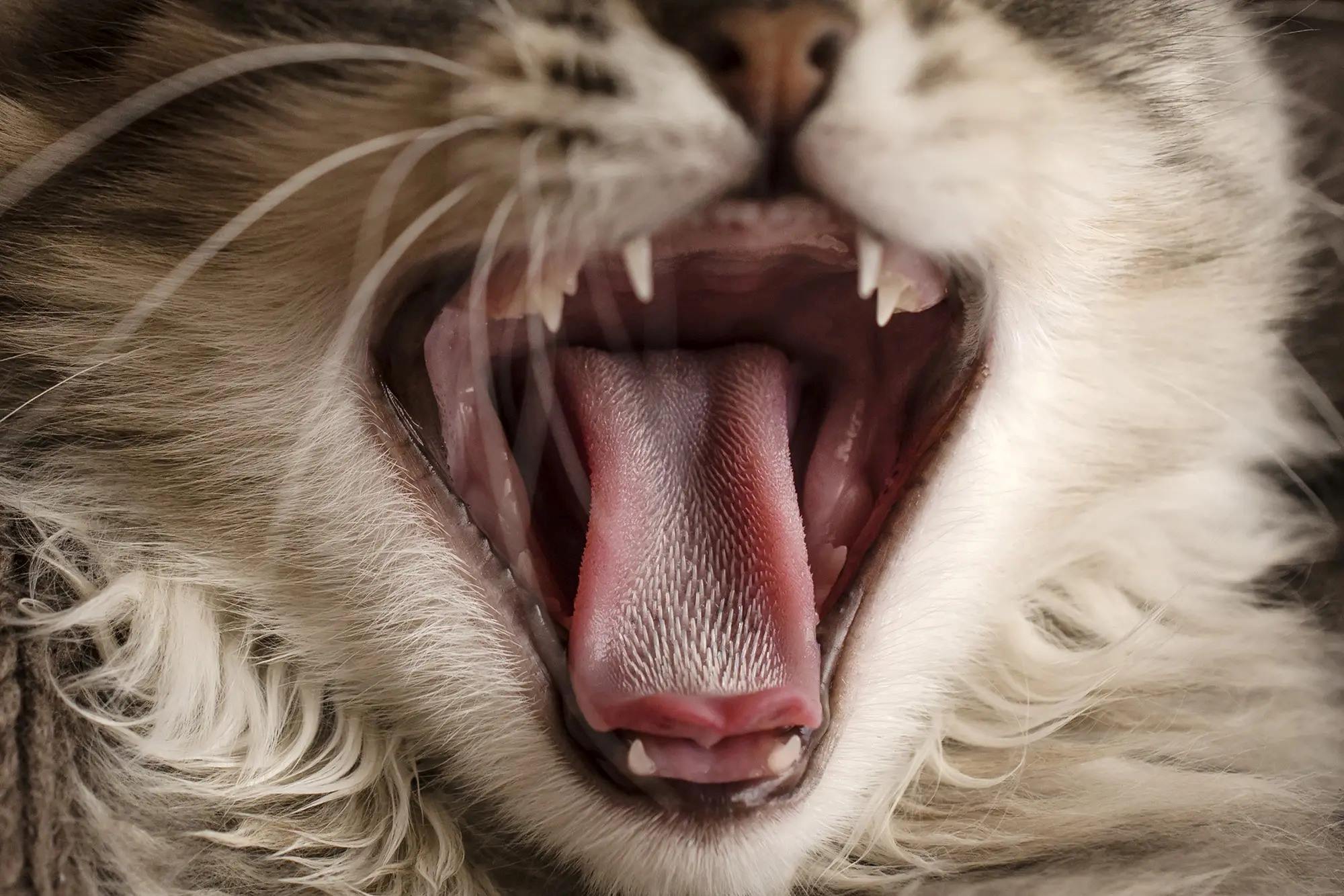

Science
The Surprising Reason Why Cat Tongues Are So Rough
Published: January 9, 2024
Discover the science behind the rough texture of cat tongues and the surprising reason for their unique design. Explore the fascinating insights into feline anatomy and behavior.
(Many of the links in this article redirect to a specific reviewed product. Your purchase of these products through affiliate links helps to generate commission for Noodls.com, at no extra cost. Learn more)
Table of Contents
Introduction
Cats are fascinating creatures with a multitude of intriguing traits, and one of the most peculiar features of their anatomy is their rough tongues. If you've ever been licked by a cat, you've likely experienced the surprising sensation of their tongue's rough texture. This unique characteristic sets felines apart from many other animals and serves a crucial purpose in their daily lives. Understanding the structure and function of a cat's tongue provides a glimpse into the remarkable adaptations that enable these enigmatic creatures to thrive in their environments.
The roughness of a cat's tongue is not immediately apparent to the naked eye, but upon closer inspection, it becomes evident that their tongues are covered in tiny, backward-facing barbs known as papillae. These papillae are composed of keratin, the same material found in human fingernails, and are responsible for the abrasive texture of a cat's tongue. This seemingly simple feature plays a pivotal role in a cat's grooming habits, feeding behaviors, and overall well-being.
As we delve into the intricacies of a cat's tongue, we will uncover the surprising reasons behind its roughness and explore the ways in which this unique adaptation benefits cats in various aspects of their lives. Furthermore, we will discuss the implications of this fascinating trait for cat owners, shedding light on how understanding the intricacies of a cat's tongue can enhance our interactions with these beloved companions. Join us on this captivating journey into the world of feline anatomy, where we unravel the mysteries behind the roughness of cat tongues and gain a deeper appreciation for the remarkable adaptations that make cats such extraordinary creatures.
The Structure of a Cat's Tongue
A cat's tongue is a marvel of natural engineering, comprising a complex arrangement of specialized features that contribute to its distinctive texture and functionality. At first glance, a cat's tongue may appear to be a smooth and uniform surface, but a closer examination reveals a fascinating array of tiny structures known as papillae. These papillae are small, backward-facing barbs that cover the surface of the tongue, giving it a rough, sandpaper-like texture. Composed of keratin, the same material found in human fingernails, these papillae are remarkably resilient and play a crucial role in a cat's daily activities.
The papillae on a cat's tongue serve multiple purposes, including grooming, feeding, and sensory perception. When a cat grooms itself, these tiny barbs act as a natural comb, helping to remove dirt, debris, and loose fur from the animal's coat. This self-grooming behavior not only helps to maintain the cat's hygiene but also serves as a form of relaxation and stress relief. Additionally, the rough texture of the tongue aids in detangling and smoothing the fur, ensuring that it remains clean and free of mats.
Furthermore, the structure of a cat's tongue facilitates efficient feeding behaviors. As obligate carnivores, cats rely on a diet primarily composed of meat, and their tongues are well-adapted to this dietary preference. The rough texture of the tongue assists in stripping flesh from bones and lapping up liquids, allowing cats to consume their food with precision and ease. This specialized structure reflects the evolutionary adaptations that have enabled cats to thrive as skilled hunters and carnivorous predators.
In addition to grooming and feeding, the structure of a cat's tongue also plays a role in sensory perception. The numerous papillae on the tongue are equipped with sensory receptors, enhancing a cat's ability to detect and manipulate objects with remarkable dexterity. This heightened sensitivity contributes to the cat's adeptness in exploring its environment and engaging in intricate behaviors such as capturing prey, grooming offspring, and interacting with objects in its surroundings.
The intricate structure of a cat's tongue is a testament to the remarkable adaptations that have evolved in these enigmatic creatures. From grooming and feeding to sensory perception, the unique features of their tongues serve as essential tools for their survival and well-being. By gaining a deeper understanding of the structure of a cat's tongue, we can appreciate the intricate complexities of feline anatomy and gain insight into the remarkable adaptations that enable cats to thrive in diverse environments.
The Function of a Cat's Rough Tongue
The rough texture of a cat's tongue serves a multitude of essential functions that are integral to a feline's daily life. One of the primary roles of a cat's rough tongue is grooming. When a cat licks its fur, the tiny backward-facing barbs, or papillae, on its tongue act as a natural comb, effectively removing dirt, debris, and loose fur from the animal's coat. This grooming behavior is not merely about cleanliness; it also serves as a form of relaxation and stress relief for the cat. Through the meticulous process of self-grooming, cats maintain their hygiene and regulate their body temperature, all while experiencing a sense of comfort and security.
Moreover, the rough texture of a cat's tongue plays a crucial role in maintaining the condition of its fur. As the papillae comb through the fur, they help to detangle and smooth the coat, preventing the formation of mats and ensuring that the fur remains in optimal condition. This grooming process also distributes natural oils throughout the fur, promoting its luster and overall health. By leveraging the abrasive texture of their tongues, cats exhibit fastidious grooming habits that are essential for their well-being and comfort.
In addition to grooming, a cat's rough tongue facilitates efficient feeding behaviors. As obligate carnivores, cats consume a diet primarily composed of meat. When feeding, the rough texture of their tongues aids in stripping flesh from bones and lapping up liquids with precision. This specialized adaptation enables cats to consume their food effectively, reflecting their evolutionary prowess as skilled hunters and carnivorous predators. The unique structure of their tongues aligns with their dietary preferences and contributes to their adeptness in capturing and consuming prey in the wild.
Furthermore, the roughness of a cat's tongue enhances its sensory perception and dexterity. The numerous papillae on the tongue are equipped with sensory receptors, allowing cats to detect and manipulate objects with remarkable precision. This heightened sensitivity contributes to their agility in exploring their environment, engaging in intricate behaviors, and interacting with objects in their surroundings. Whether it's grooming offspring, capturing prey, or navigating their territory, the rough texture of their tongues enhances their tactile capabilities, enabling them to thrive in diverse environments.
In essence, the roughness of a cat's tongue serves as a multifaceted tool that supports essential aspects of a feline's life. From grooming and feeding to sensory perception and dexterity, this unique adaptation underscores the remarkable versatility and functionality of a cat's tongue. By understanding the diverse functions facilitated by the rough texture of their tongues, we gain insight into the intricate adaptations that have enabled cats to flourish as resilient and resourceful creatures.
The Benefits of a Rough Tongue for Cats
The rough texture of a cat's tongue confers a myriad of benefits that are fundamental to their well-being and survival. One of the primary advantages lies in the realm of grooming. When a cat meticulously licks its fur, the tiny backward-facing barbs, or papillae, on its tongue act as a natural comb, effectively removing dirt, debris, and loose fur from the animal's coat. This grooming behavior is not merely about cleanliness; it also serves as a form of relaxation and stress relief for the cat. Through the meticulous process of self-grooming, cats maintain their hygiene and regulate their body temperature, all while experiencing a sense of comfort and security.
Moreover, the rough texture of a cat's tongue plays a crucial role in maintaining the condition of its fur. As the papillae comb through the fur, they help to detangle and smooth the coat, preventing the formation of mats and ensuring that the fur remains in optimal condition. This grooming process also distributes natural oils throughout the fur, promoting its luster and overall health. By leveraging the abrasive texture of their tongues, cats exhibit fastidious grooming habits that are essential for their well-being and comfort.
In addition to grooming, a cat's rough tongue facilitates efficient feeding behaviors. As obligate carnivores, cats consume a diet primarily composed of meat. When feeding, the rough texture of their tongues aids in stripping flesh from bones and lapping up liquids with precision. This specialized adaptation enables cats to consume their food effectively, reflecting their evolutionary prowess as skilled hunters and carnivorous predators. The unique structure of their tongues aligns with their dietary preferences and contributes to their adeptness in capturing and consuming prey in the wild.
Furthermore, the roughness of a cat's tongue enhances its sensory perception and dexterity. The numerous papillae on the tongue are equipped with sensory receptors, allowing cats to detect and manipulate objects with remarkable precision. This heightened sensitivity contributes to their agility in exploring their environment, engaging in intricate behaviors, and interacting with objects in their surroundings. Whether it's grooming offspring, capturing prey, or navigating their territory, the rough texture of their tongues enhances their tactile capabilities, enabling them to thrive in diverse environments.
In essence, the roughness of a cat's tongue serves as a multifaceted tool that supports essential aspects of a feline's life. From grooming and feeding to sensory perception and dexterity, this unique adaptation underscores the remarkable versatility and functionality of a cat's tongue. By understanding the diverse functions facilitated by the rough texture of their tongues, we gain insight into the intricate adaptations that have enabled cats to flourish as resilient and resourceful creatures.
The Implications for Cat Owners
Understanding the unique characteristics of a cat's tongue holds significant implications for cat owners, offering valuable insights into feline behavior, care, and interactions. The rough texture of a cat's tongue plays a pivotal role in grooming, feeding, and sensory perception, and these functions have direct implications for cat owners in various aspects of their relationship with their feline companions.
First and foremost, the grooming behavior facilitated by a cat's rough tongue has implications for cat owners in terms of feline hygiene and well-being. Cats are meticulous groomers, and their rough tongues enable them to engage in thorough self-cleaning rituals. As a result, cat owners can observe and appreciate the importance of grooming in maintaining their pet's coat health and cleanliness. Additionally, understanding the role of the tongue in grooming can prompt cat owners to provide appropriate grooming tools and practices to support their cat's natural grooming behaviors.
Furthermore, the feeding behaviors influenced by a cat's rough tongue have implications for cat owners in terms of dietary considerations and mealtime experiences. The specialized structure of a cat's tongue reflects its evolutionary adaptation as an obligate carnivore, and cat owners can align their understanding of this dietary preference with the selection of appropriate foods for their feline companions. Additionally, recognizing the role of the tongue in feeding behaviors can encourage cat owners to provide enriching feeding experiences that cater to their cat's natural instincts and abilities.
Moreover, the sensory perception and dexterity enhanced by a cat's rough tongue have implications for cat owners in terms of environmental enrichment and interactive experiences. Cat owners can appreciate the tactile capabilities of their pets and create stimulating environments that cater to their sensory needs. Understanding the role of the tongue in sensory perception can also guide cat owners in promoting interactive play and bonding activities that leverage their cat's natural abilities.
In essence, the implications of a cat's rough tongue for cat owners extend beyond mere observation, offering a deeper understanding of feline behaviors and needs. By recognizing the multifaceted functions facilitated by the rough texture of a cat's tongue, cat owners can enhance their interactions with their feline companions, provide tailored care and enrichment, and foster a deeper appreciation for the remarkable adaptations that make cats such extraordinary and captivating pets.
Conclusion
In conclusion, the roughness of a cat's tongue is far more than a mere physical attribute; it is a multifaceted marvel that underscores the remarkable adaptations of feline anatomy. From the intricate structure of the tongue, comprised of tiny backward-facing barbs known as papillae, to the diverse functions it serves in grooming, feeding, and sensory perception, a cat's tongue is a testament to the ingenuity of nature's design. The rough texture of a cat's tongue plays a pivotal role in enabling these enigmatic creatures to thrive in their environments, exhibiting remarkable versatility and functionality.
By delving into the structure and function of a cat's tongue, we gain a profound appreciation for the intricate adaptations that have evolved in these captivating animals. The grooming behaviors facilitated by the rough tongue not only maintain the cat's hygiene but also provide a source of comfort and relaxation. Furthermore, the tongue's role in feeding behaviors aligns with the cat's evolutionary prowess as a skilled hunter and obligate carnivore, showcasing the seamless integration of form and function in their anatomy.
Moreover, the implications of a cat's rough tongue for cat owners are significant, offering valuable insights into feline care, behavior, and interactions. Understanding the multifaceted functions of the tongue empowers cat owners to provide tailored care, enriching environments, and engaging experiences that cater to their pets' natural instincts and abilities.
In essence, the roughness of a cat's tongue unveils a world of complexity and adaptability, underscoring the extraordinary nature of these beloved companions. As we marvel at the unique attributes of a cat's tongue, we gain a deeper understanding of the intricate adaptations that have enabled cats to flourish as resilient and resourceful creatures. This journey into the world of feline anatomy leaves us with a profound sense of wonder and admiration for the remarkable creatures that share our lives, reminding us of the endless marvels found within the animal kingdom.
